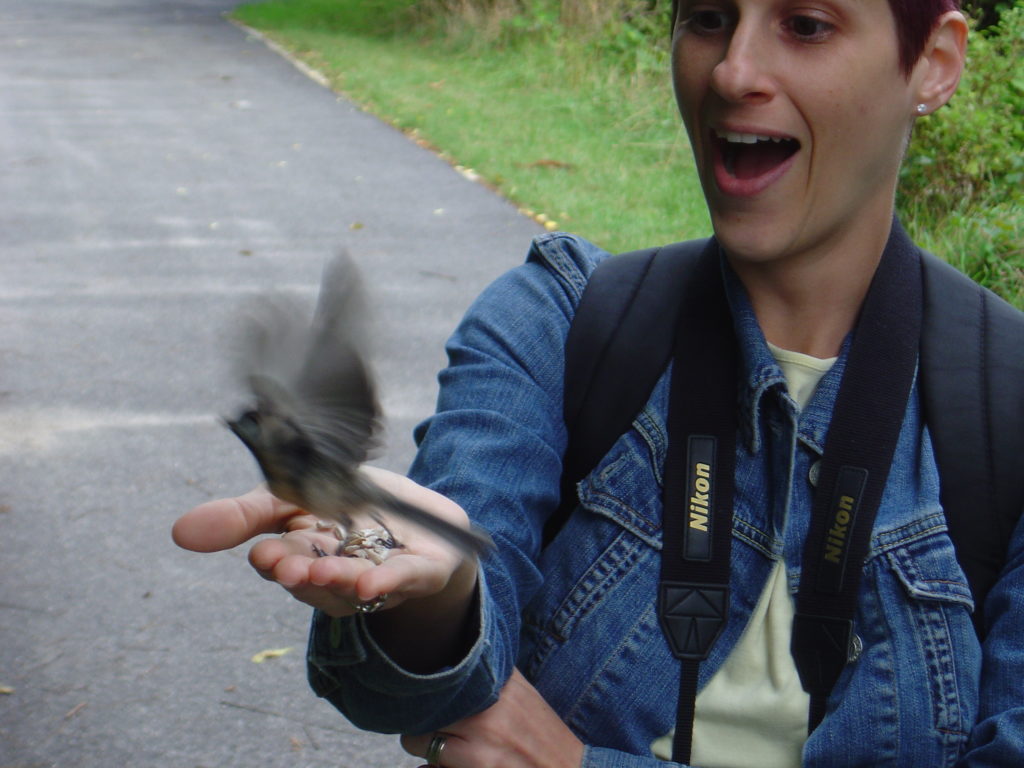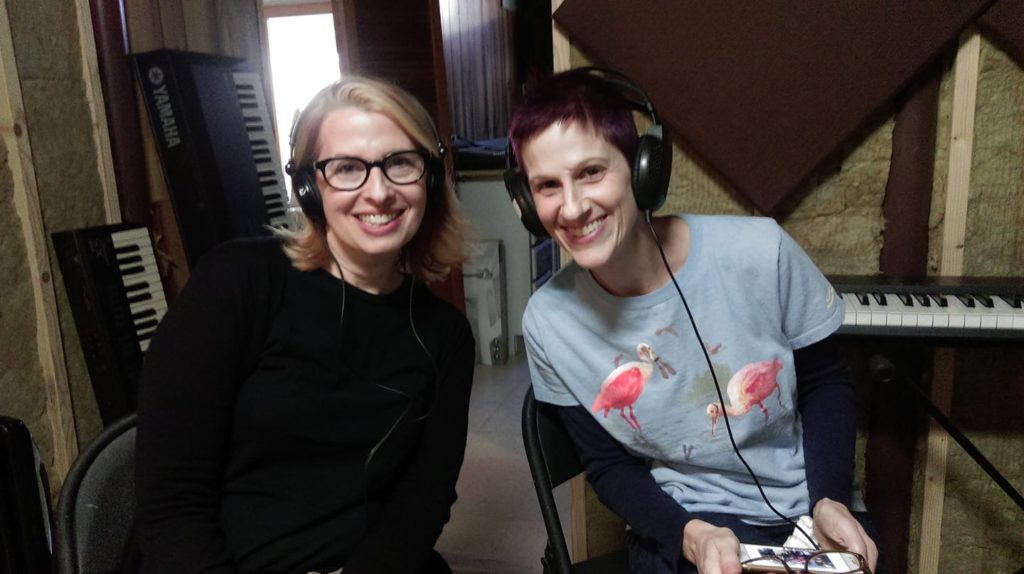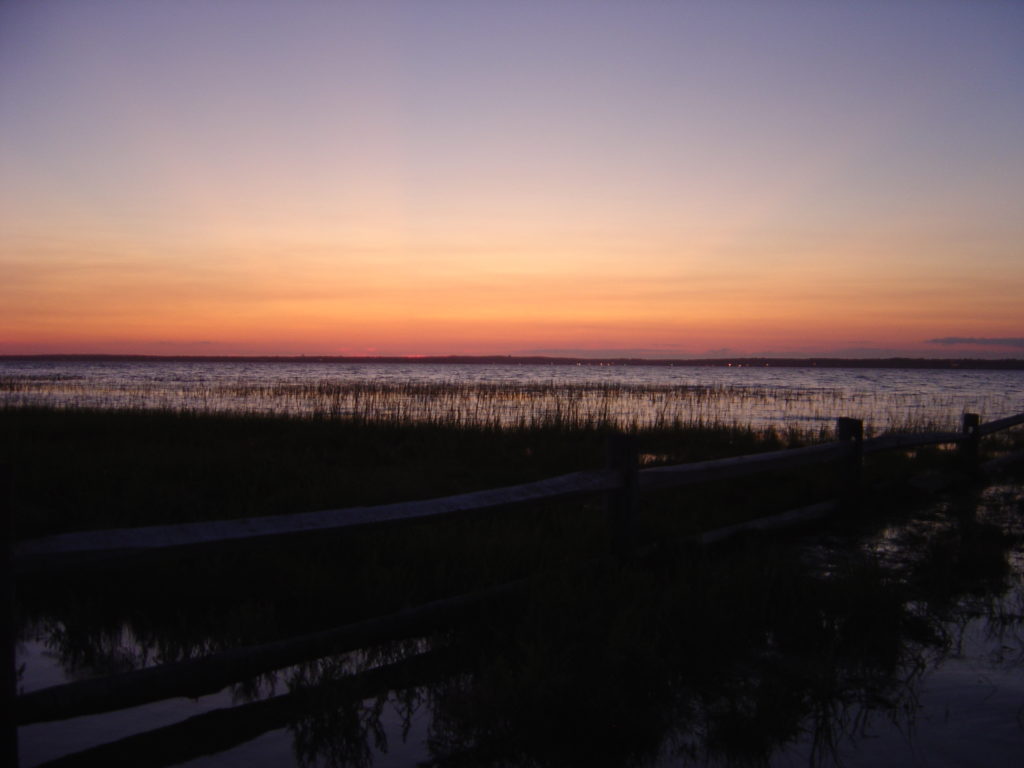Bio
An interview with myself:
Q: What is your musical background?
A: I was the drummer in The Aquanettas from 1989 to 1994. Our first record, “Love With the Proper Stranger,” came out on Nettwerk/IRS in 1990. In 1991 and 1992, through Major Label Records in the US and Plastic Records in the UK, we released a few singles: “Whoa!” which was NME’s Song of the Week, and the “Super Absorbent Maxi Single,” which contained a few singles in one. Our “Roadhaus” EP came out on Rockville in 1993. “Mind Full of Worry” was featured on the soundtrack for Hal Hartley’s movie “Amateur,” and “Beach Party” was on the “Kissed” soundtrack. We broke up around 1994, after we paid back Claudine’s mother, who had lent us $3,000. Such is the life of a rock and roll band.
Q: When did you begin to sing?
A: In 1995, I joined Adam Roth’s wonderful 4-part harmony pop band called Psychic Penguin. We all switched around on instruments. I played drums on some songs, but I also had a percussion setup and sang backup vocals on all of the songs. By 1997, I had written an album’s worth of my own material. As Psychic Penguin waned, I formed my own band called Birdy, and that’s when I became a lead singer. We released two CDs on Cropduster Records in 1999 and 2002: “Supernominal Paraphernalia” and “Quarantine.” Cropduster was a collective, cooperative label. The people who owned the label were also on the label. It was a fantastic experience, and during that time I met my husband, Bob Perry (formerly of Winter Hours), who produced “There Are Birds” (as well as Birdy’s “Quarantine”).
Q: I notice your previous two band names are bird themed. Coincidence?
A: Total freaky coincidence. I did not become a bird watcher until 2004.
Q: Who are some of your musical influences?
A: There are so many, but when it comes down to it, I’m drawn to pop music with a lot of harmony. I mean “pop” in the sense of The Beach Boys, The Mamas and The Papas, Crowded House, and The Beatles. But I love a variety of music, such as Elton John, The Police, Aimee Mann, U2, The Pretenders, The Go-Go’s, Fleetwood Mac, The Bangles, Linda Ronstadt, The Clash, Tom Petty, Elvis Costello, Elvis Presley, Lisa Marie Presley, Emmylou Harris, X, The Carpenters, Stetsasonic, Concrete Blonde, Mike Viola, Pat Benatar, Matthew Sweet, Wendy and Lisa, Steely Dan, Patsy Cline, Heart, and Todd Rundgren.
Q: You also worked in the music industry for many years, yes?
A: I worked at Island Records and Virgin Records for a combined 16 years from 1986 until 2002. I did college radio promotion for quite a few years and then video promotion. Those were some of the best and craziest times of my life.
Q: How did you get into birding?
A: When Bob and I married, I moved from New York City, where I had lived for 20 years, to suburban New Jersey. One day I was searching online, and the Audubon Christmas Bird Count appeared. I decided to go out and count birds in my neighborhood with a very cheap pair of binoculars. As I watched little brown blobs with feathers, I realized I could not even identify a House Sparrow. The next day I bought a Peterson guide and carefully studied the House Sparrow. I knew they were common and figured they were mingling with my local Pigeon flock. I went outside and positively identified them, and I was hooked. The House Sparrow was my “spark” bird!
Q: What is it about bird watching that is so therapeutic?
A: It’s a complete distraction in the best possible way from worry and stress. When I am out in the field, whether it is simply in my yard or at a bird festival in another state, I am free from anxiety. I am completely focused on and excited about seeing birds. My mind is relaxed, and I feel calm and happy. Even if I’m having a very bad day in terms of depression and anxiety, bird watching always helps me feel better.
Q: Can you talk a bit about the making of “There Are Birds”?
A: We recorded and mixed in the Bald Eagle room at Chrometop Studio, which is in our basement! Bob has created a fantastic environment. We have some excellent echo effect happening in our stairwell, so at one point co-engineer Scott Anthony suggested putting a mic in there to pick up some of that effect for the hard-rocking “Violet-crowned Hummingbird.”
Sim Cain (drums) and Ray Nissen (bass) completed all the basic tracks in one insanely fun weekend. Then Bob and I overdubbed guitars and vocals at our leisure and would pass off semi-finished songs to Ray, who wrote and arranged the brass and orchestral parts. The horn players recorded here for a day, as did Charlie Giordano (E Street Band), who played two of the most beautiful accordions I’ve ever seen.
A special benefit of recording at home is that there is no time constraint. You don’t have to book a studio and be pressured into getting everything done within a certain time frame. We had a schedule that we tried to adhere to, but at the same time, we had the freedom to record when we felt like it.
Q: How did you decide which birds to write about?
A: Many of the songs arose from actual events. For example, “Veery” is about going to my local nature center Flat Rock Brook when we lived in Englewood, NJ, and happening upon an unusually friendly Veery during migration. I sat down on the hill overlooking the horseshoe boardwalk, and the Veery kept hopping around me and listening to me talk to it. I went back the next day and there it was, and we did the same thing again. I visited the bird for a couple weeks until one day, it was gone.
“House Sparrow” was written about a bird that Bob rescued when he was mowing the lawn. She was nearly dead, but we took her inside and I put her in a box and gave her some water and food. I sat with her for a couple hours and sang to her, and I named her Emily. When she recovered, we tried to get her to fly out the window, but she got disoriented and started flying all over the room. Bob found a broomstick and got her to sit on it, and we took her over to a window and extended the broomstick far outside, so she wouldn’t mistakenly fly back in. Before she took off, she turned around and looked right at us, as if she were saying, “thanks for helping me,” and then she flew away and landed in a tree next to some other House Sparrows. I understand that House Sparrows are not native to this country, and I know they are considered pests (to put it nicely), but that bird needed help, and I wasn’t going to let her die if I could help it.
Other songs came about from the desire to write about specific birds, such as the Black-throated Blue Warbler, which is my favorite warbler. I was searching through my old lyric books on a whim and found what are now most of the verses for “Black-throated Blue Warbler,” although I rewrote some of them to fit the sentiment of the song. I wrote new lyrics for the choruses, and I thought it all fit together perfectly. My goal was to convey how migration evolved over a great expanse of time and how it is innate within the birds.
Q: How did you choose Megan Massa to design the CD cover art?
A: I saw an article in ABA Magazine about Megan and began looking at her work on Facebook and some other sites. I absolutely loved what I saw and was very drawn to her images. This was a few months before the publication of the 50th anniversary edition of the ABA Magazine with her cover art for the Red-billed Tropicbird, which is ABA’s 2019 Bird of the Year. I contacted her, we talked on the phone, and I sent her some demos of all the songs. She roughed out 3 or 4 concepts based on our conversation, and we ran with the Black-throated Blue Warbler idea.
I wanted Megan to capture my sentiment that birds are here no matter what we humans do (well, barring complete environmental destruction, but that’s a whole other topic). They exist and go about their business whether we observe them or not. They migrate. They breed. They live and die. Hence, there are birds. But Megan also pointed out another theme running through my lyrics, which is the passage of time. I hadn’t been conscious of it until she mentioned it, but indeed it’s true, and it’s especially evident in the lyrics for “Black-throated Blue Warbler.” Megan was able to marry those two ideas in her stunning cover art. I couldn’t be happier with the end result.







